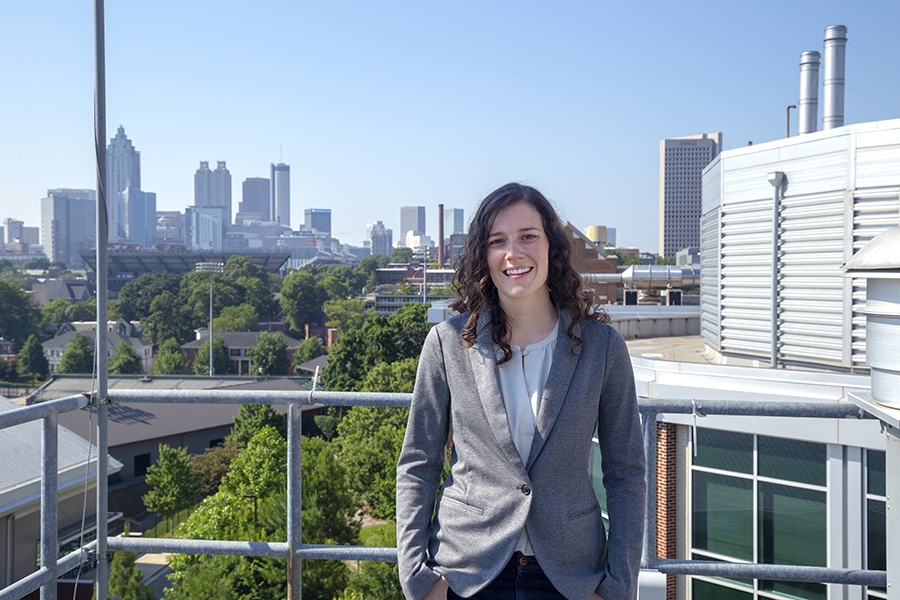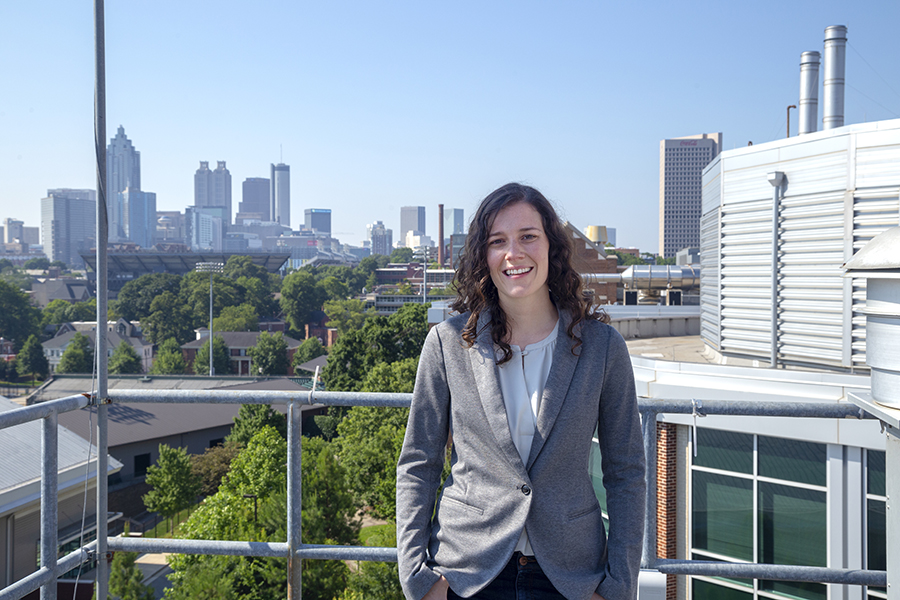
 |
| Assistant Professor Jennifer Kaiser. Photo: Amelia Neumeister |
Assistant Professor Jennifer Kaiser is leading one of 11 projects to receive funding from the National Oceanic and Atmospheric Administration (NOAA) Climate Program Office’s Atmospheric Chemistry, Carbon Cycle, and Climate (AC4) program in Fiscal Year 2021. The competitively selected projects aim to increase our understanding of emissions and chemical transformation in the urban atmosphere.
Despite decades of decline in ground-level ozone and fine particulate matter, many U.S. metropolitan areas still violate the 8-hour ozone standard as regulated under the Clean Air Act. This could be a result of unanticipated trends in emissions, increasing influence of regional background sources, long-range transport, changes in atmospheric chemistry, and/or a consequence of a changing climate with heat waves in the United States becoming more frequent, longer in duration, and more intense.
In fact, warming climate and increasing episodes of extreme heat—because they exacerbate air quality—require higher emission reductions to meet air quality standards, and present their own challenges due to various impacts of extreme heat.
Recent research has also revealed major gaps in our understanding of urban chemistry. In urban atmospheres, volatile chemical products (VCPs)— things like coatings, adhesives, inks, personal care products and cleaning agents—are emerging as a major source of volatile organic compounds (VOCs), which have harmful environmental and health impacts.
The emissions and impacts of VCPs on atmospheric chemistry are not well understood. In the presence of nitrogen oxides (NOx), VOCs undergo chemistry that lead to the formation of ground-level ozone and aerosols. In a pilot study, field measurements in New York City revealed that fragrant consumer products, such as air freshener, and other VCPs account for over half of the anthropogenic VOC emissions, and enhance formation of ground-level ozone during a heatwave event. Ground-level ozone can trigger a variety of health problems in children, the elderly, and people of all ages who have lung diseases such as asthma.
To improve our understanding of emissions and chemical reactions that affect urban air quality and climate, the NOAA Chemical Sciences Laboratory is planning the Atmospheric Emissions and Reactions Observed from Megacities to Marine Areas (AEROMMA) aircraft-based field campaign to collect new observations from megacities to marine environments, currently scheduled for the summer of 2023.
Kaiser’s project will deploy the In Situ Airborne Formaldehyde (ISAF) instrument on the NOAA WP-3D aircraft during the AEROMMA field campaign, and use formaldehyde measurements to examine the emissions and fate of VOCs in urban environments.
Formaldehyde plays a central role in atmospheric oxidation processes as both a product of VOC oxidation and a source of oxidants. AEROMMA measurement priorities include detailed VOC speciation, and formaldehyde is a key component of the VOC pool. This study will enhance researchers’ ability to predict air quality now and in the future as a function of increasing urbanization and rising temperatures.
Chemically detailed observations during AEROMMA alongside formaldehyde observations will be key to interpreting future high-resolution satellite-based formaldehyde observations, extending the impact of the AEROMMA project well beyond the spatial and temporal scales of the field campaign. The ultimate goal is to improve understanding of VOC oxidation and thereby improve the air quality models used in policy decisions.
Kaiser’s co-principal investigators are Reem Hannun from the University of Maryland, Baltimore County and Jason St. Clair from the NASA Goddard Space Flight Center. The researchers will receive $546,687 from the AC4 program to fund the project.
Click to read more about the other projects selected for AC4 Awards.
